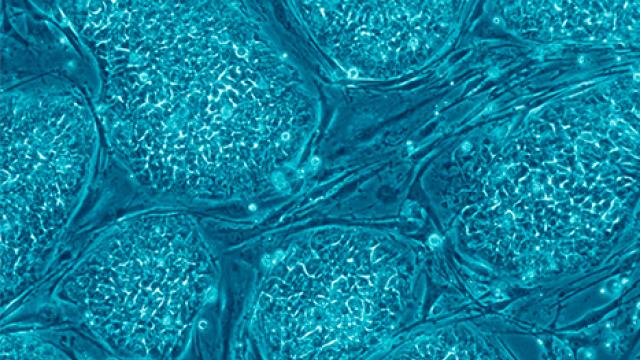
This human T cell (blue) is under attack by HIV (yellow), the virus that causes AIDS.
Photo credit: National Institute of Allergy and Infectious Diseases, National Institutes of Health
A newly identified long noncoding RNA molecule has been found to influence the expression of a key receptor, CCR5, involved in HIV infection and progression. The finding, published June 17, 2019, in Nature Immunology, points to the molecule as a potential marker that indicates a patient’s susceptibility to the virus.
Researchers have been eager to better understand the nature of CCR5 because it is through this receptor that HIV is able to enter and infect T cells. Smita Kulkarni, Ph.D., Assistant Professor at Texas Biomedical Research Institute, has been exploring ways in which long noncoding RNA (lncRNA), which do not create proteins but are known to influence cellular activity, may affect CCR5 expression. In partnership with Mary Carrington, Ph.D., Senior Investigator in the Cancer and Inflammation Program, the team of researchers scanned the genetic region near the CCR5 gene for lncRNAs that might impact CCR5 expression. This analysis led them to a new lncRNA, which they called CCR5AS.
Intriguingly, when they reduced expression of CCR5AS, this decreased expression of CCR5 on the type of immune cells that HIV infects. In contrast, increasing expression of CCR5AS resulted in increased expression of the receptor.
Through further investigation, the researchers found that CCR5AS works by absorbing a protein that causes degradation of the CCR5 messenger RNA, which in turn decreases CCR5 protein expression on the cell surface. “These data reveal a novel mechanism in which expression of a long noncoding RNA affects HIV infection and disease progression,” Dr. Carrington says.
Now, Dr. Carrington is teaming with Dr. Kulkarni once again to explore whether expression of the lncRNA is associated with the level of virus integrated into the genome in people taking anti-retroviral drugs. “If this lncRNA associates with the level of virus integrated into the genome, it could be diagnostic of who is more likely to respond to cure initiatives,” explains Dr. Carrington.


